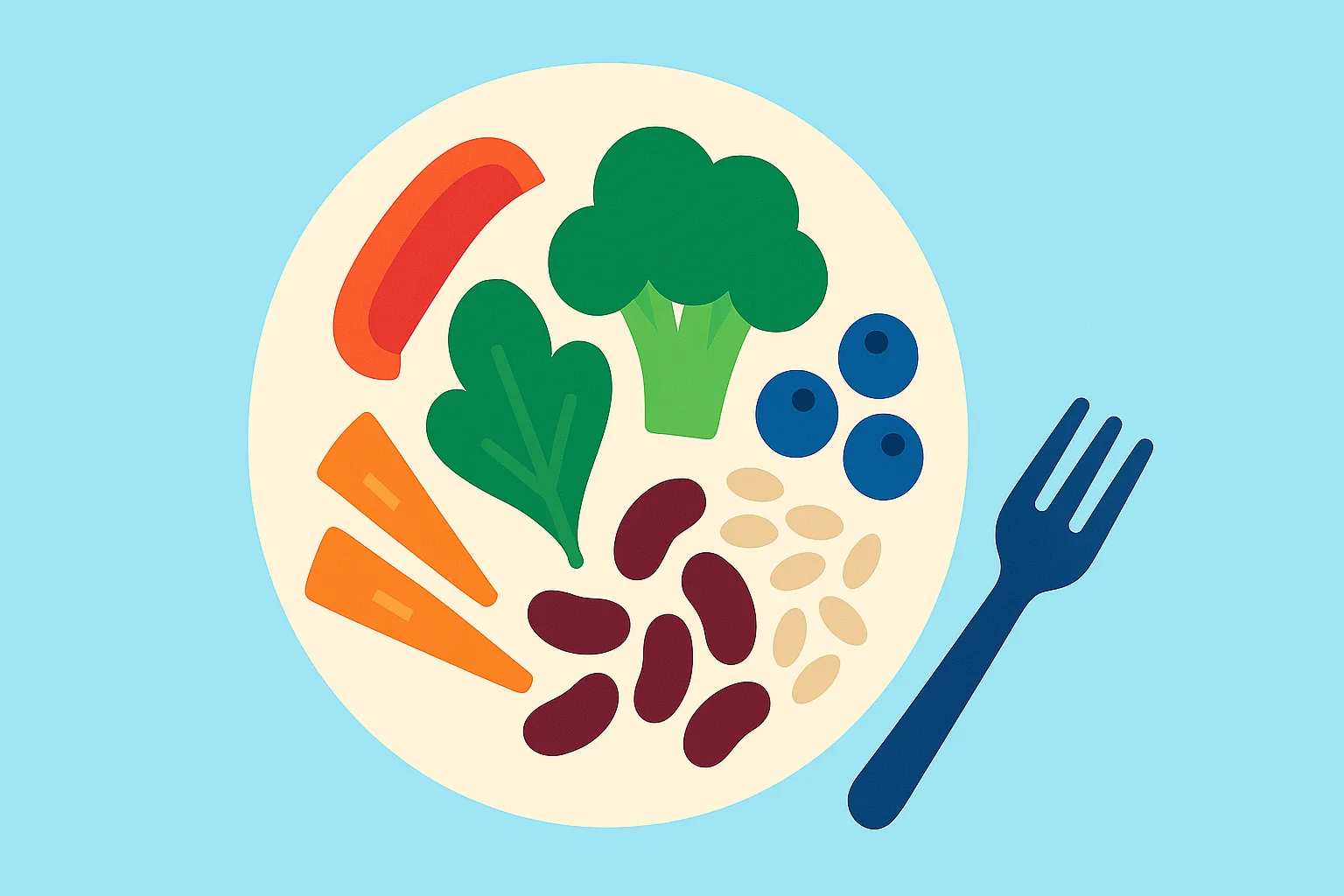If you spend any time on TikTok or wellness forums, you’ve likely come across the buzzword of the moment: fibermaxxing. The trend is simple in theory — eat as much fiber as possible, often through powders, supplements, or “super high-fiber” foods — all in the name of improving digestion, losing weight, or achieving that ever-elusive state of “optimal gut health.”
It’s catchy, it’s viral, and it’s everywhere. But does fibermaxxing live up to the hype? Or is it another case of wellness culture taking a good idea and running it to extremes?
The Allure of Fiber
Fiber isn’t new. Nutrition experts have long praised it as essential for digestion, heart health, and metabolic balance. Diets rich in fruits, vegetables, legumes, and whole grains consistently show benefits: lower cholesterol, steadier blood sugar, reduced risk of colon cancer, and more.
In fact, research suggests that most people aren’t getting enough fiber. The American Heart Association recommends about 25–30 grams per day, but the average intake hovers closer to 15 grams. That gap sets the stage for trends like fibermaxxing, which promise to make up for deficiencies — fast.
What Fibermaxxing Really Means
On social media, fibermaxxing isn’t just about “getting enough.” It’s about getting a lot. Influencers show off meals stacked with fiber-rich foods: chia seed puddings, lentil salads, high-fiber tortillas, and heaping spoonfuls of psyllium husk stirred into smoothies. Fiber supplements — once marketed quietly for constipation — are now rebranded as “gut-boosting powders.”
The message is clear: if some fiber is good, then more must be better.
The Science: Benefits of More Fiber
There is truth behind the enthusiasm. Studies consistently link higher fiber intake with:
- Better digestion: Soluble fiber absorbs water, forming a gel that softens stools and helps regulate bowel movements.
- Gut microbiome diversity: Fiber acts as a prebiotic, feeding beneficial bacteria in the colon. A study in Nature found that diverse fiber intake promotes a healthier, more resilient microbiome.
- Weight management: Fiber slows digestion, increasing satiety and reducing overeating.
- Metabolic health: Increased fiber has been shown to lower blood sugar spikes and improve cholesterol profiles.
This explains why nutrition researchers often call fiber a “nutrient of public health concern.”
The Risks of Taking It Too Far
But here’s where hype meets reality. Like most wellness fads, fibermaxxing has a shadow side.
Eating dramatically high amounts of fiber — especially from supplements — can backfire. Common issues include bloating, gas, abdominal cramps, and even nutrient malabsorption. Suddenly jumping from 15 grams to 50 grams per day isn’t just uncomfortable; it can be harmful for people with sensitive digestive systems or conditions like IBS.
A review in Current Opinion in Clinical Nutrition and Metabolic Care notes that fiber’s benefits follow a U-shaped curve: too little is bad, but too much can cause its own problems. Balance, not excess, remains the key.
Social Media and the Extremes
The problem isn’t fiber itself — it’s the internet’s tendency to push everything to the max. Platforms like TikTok thrive on bold claims and quick hacks. A measured message like “try adding more vegetables and whole grains” doesn’t go viral. “Fibermaxxing changed my gut overnight” does.
This mirrors past trends: protein loading, keto extremes, juice cleanses. Fiber is simply the latest nutrient to be swept up in the hype cycle.
What Experts Actually Recommend
So, where does that leave us? Nutrition experts agree that most people would benefit from eating more fiber — but in a balanced, gradual way.
Practical tips include:
- Aim for 25–35 grams per day, increasing slowly to allow your gut to adjust.
- Choose diverse sources: beans, berries, oats, leafy greens, seeds.
- Drink plenty of water, since fiber without hydration can cause constipation.
- Use supplements if needed, but as additions, not replacements for whole foods.
As Dr. Megan Rossi, a dietitian and gut health researcher, puts it: “Think of your gut bacteria like a garden. They thrive when you feed them a variety of plants, not when you dump in one type of fertilizer.”
Why Fibermaxxing Resonates
The popularity of fibermaxxing reveals something deeper. It reflects our cultural hunger for quick fixes in wellness. Gut health has become a massive industry, with probiotics, supplements, and “detox” products promising instant results. Fiber, by comparison, feels accessible and grounded — a trend rooted in science rather than pseudoscience.
At the same time, the extremity of fibermaxxing highlights a cultural blind spot: we struggle with moderation. Instead of “enough fiber,” the narrative becomes “more, more, more.”
The Takeaway
Fiber is essential. Most of us should eat more of it, and doing so will likely improve digestion, mood, and long-term health. But turning fiber into the next viral “maxxing” challenge misses the point. The healthiest approach isn’t about extremes — it’s about balance.
So by all means, load up your plate with beans, greens, and berries. Just remember: fiber is powerful fuel, but even the best fuel needs the right dose.
References
- The impact of dietary fiber consumption on human health: An umbrella review of meta-analyses of observational studies, ScienceDirect (2025) Link
- Dietary fibre intake and risk of cardiovascular disease: systematic review and meta-analysis, BMJ (2013) Link
- Dietary fiber intake and all-cause and cause-specific mortality: An updated systematic review and meta-analysis, ScienceDirect (2023) Link
- Health benefits of dietary fiber, Nutrition Reviews (Williams et al., 2009) Link

